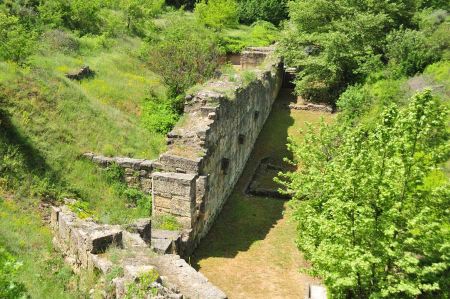Ennea Hodoj to Amphipolis - alternating occupiers
- Written by Portal Editor
For the first time in the year 464 BC, Athens had tried to gain a foothold in the area of Ennea Hodoj, but had been repulsed by the residential Edon tribes in the Battle of Drabeskos.
It was under the Athenian general Hagnon that the conquest succeeded in 437 BC and a new city was established instead of the settlement Ennea Hodoj: Amphipolis.
Subsequently, Amphipolis became an important base for Athens in Thrace to take over and control the gold and silver mines in the Thasitic Peraia. Its port at the mouth of the Strymon (originally Aioneios) was named after an ancient settlement: Eion. During the Peloponnesian War, Amphipolis gained in importance, among other things because of the immensely important procurement of timber for shipbuilding, the increasing revenues from the local mines and the tariffs on the traded goods due to the strategic position of the place.
Athenian General Kleon attacked the Spartanians of Brasidas at Amphipolis
In 356 BC, Amphipolis was conquered by Philip II of Macedonia. As the Athenians maintained their claims to the city, the conflict about Amphipolis continued to play an important role in the development of Macedonian-Athenian relations in the following years.
In the time of the Diadoch wars, General Cassander took the young son and legitimate heir to the throne of Alexander the Great, together with his mother Roxane, the first wife of Alexander the Great, Alexander IV Aigos, under house arrest in Amphipolis in 309 BC, they both were killed by the commander Glaucia, ending with the Macedonian ruling class of the Argeads.
Macedonian King Perseus stood in the battle near Pydna
Amphipolis is also mentioned in the Acts of the Apostles in the New Testament as a travel target of the Apostle Paul and his collaborator Silas (Acts 17: 1 EU). After a prosperity in late antiquity, in which there were numerous new churches being built, but also a considerable decline in population appeared, the early Middle Ages saw a gradual dismantling of the city in the troubled times of the invasion of the Slavs. First, the lower city was abandoned and the inhabitants retreated into the area around the Acropolis, later the decline in population led to a complete loss of urban structures. Lastly, a bishop of Amphipolis is mentioned in the late 8th century.
Please read as well:
Tomb in Amphipolis - excavations are intensified again
After exploring Argilos - The Lion of Amphipolis
-
-
-
-
-
-
-
-
-
-
-
-
-
-
-
-
-
-
-
-
-
-
-
-
-
-
-
https://www.alaturka.info/en/greece/serres/3780-from-ennea-hodoj-to-amphipolis-alternating-occupiers/amp#sigProId74f486bd1e
